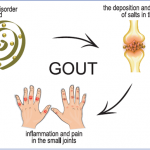“Translational research” has become the new buzzword in science. Increasingly, an important goal of research is a “bench-to-bedside” approach that rapidly progresses from fundamental laboratory studies to patient treatment. Translational science is gaining increasing prominence within the National Institutes of Health (NIH) as well. Since 2006, the NIH has funded translational research centers throughout the United States–the Clinical and Translational Science Awards (CTSA) program–and the scientific work done through these centers may soon assume new importance.
NIH Spotlight on Translational Research Grows
As part of a planned reorganization, the National Center for Research Resources—where the CTSA as well as well as other research programs are now housed—will be disbanded and a new center dedicated to translational research will be formed. Proposed by NIH Director Francis Collins, MD, PhD, the new National Center for Advancing Translational Sciences (NCATS) will be aimed at strengthening translational research within the United States. As part of that effort, partnerships will be forged between investors, academia, government, and the pharmaceutical industry to speed the development of urgently needed diagnostics and treatments, according to the proposed 2012 NIH budget. If passed by Congress, the CTSA program might fall under the NCATS Center by late 2011, according to Anthony Hayward, MD, PhD, director of the Division of Clinical Research Resources in the NCRR.
No one knows entirely what the reorganization might mean for CTSA, but it is likely to be a significant contributor to the success of NCATS and its translational science—a key goal for Dr. Collins, says Dr. Hayward. There are now 60 research centers funded by the CTSA throughout the United States, and after the reorganization, there will likely be monies available for funding more programs at additional translational institutes, Dr. Hayward notes.
In brief, the CTSA program was formed to enable innovative and collaborative scientific approaches—particularly translational research—that addressed complex health challenges. These challenges include, in the field of rheumatology, difficult-to-treat conditions, those that require complex therapies, and identification of biomarkers that might help predict disease onset and severity of conditions such as rheumatoid arthritis (RA). The program supports a national consortium of medical research centers that provide a framework for funding translational research. The centers also train new clinical and translational researchers in medical fields ranging from cardiology to oncology to ophthalmology.
“The CTSA program has been a bold new experiment, but one that was meant to evolve as circumstances change,” Dr. Hayward says. “The CTSA program is very much a moving target,” he notes, adding that the planned reorganization is likely to add new weight to the goal of advancing translational research while reducing inefficiencies within the NIH.
CTSA 101
“The CTSA PIs [principal investigators] are watching the reorganization changes within the NIH with great interest,” says Gary S. Firestein, MD, professor of medicine and dean and associate vice chancellor of translational medicine at the University of California San Diego. Dr. Firestein is a rheumatologist, researcher, and the CTSA principal investigator at the University of California San Diego Clinical and Translational Research Institute, one of the 60 CTSA-funded medical institutions in the United States.
CTSA grants are primarily used to fund the infrastructure of research programs—providing money for personnel and equipment for informatics statistics, for instance, and salaries for clinical coordinators and nurses. “Many CTSAs provide support for tools and personnel that can be used by many investigators so they don’t have to develop these tools themselves or have their own cadre of research support staff for each project they initiate,” Dr. Firestein says. Thus, research becomes both more collaborative and more efficient—and frees scientist from having to find funding for a research infrastructure for each of their scientific projects, he says.
Each CTSA-funded institution gets a grant for five years, but funding for each academic center varies depending on what resources they already have in place—ranging from $4 million to over $20 million over 5 years, according to Dr. Hayward. Although each CTSA-funded center supports different researchers and scientific projects, they share some commonalities. The CTSA funds are specifically used to provide clinical research infrastructure, to fund pilot research projects that are both novel and translational in nature, and to run training programs in scientific research for scholars at the postdoctoral level and in medical, dental, and nursing schools.
Rheumatology in Translational Research
The Clinical and Translational Science Institute at the New York University School of Medicine—which receives CTSA funds—supports between 80 and 100 scientific studies, including a registry for neonatal lupus and studies such as a basic science investigation into the role of the microbiome in the development of autoimmunity in RA, according to rheumatologist Bruce Cronstein, MD, Paul R. Esserman Professor of Medicine and director of the NYU Clinical and Translational Science Institute.
Other rheumatology scientific studies being conducted at CTSA-funded translational institutes include one that is developing an algorithm for prediction of arthritis pain based on weather forecasts at Tufts University in Boston and identification of biomarkers that might predict disease onset and severity of RA at Stanford University in Stanford, Calif. Also, a study at the University of California, San Diego is studying the novel combination therapy of the immunomodualatory peptide dnaJP1 with a chloroquine derivative—(hydroxyl)chloroquine (HCQ)—for the treatment of RA and autoimmune disorders.
Online Translational Resources
The CTSA program has birthed many innovative Internet research tools that can be accessed by any scientist or patient interested in participating in or getting information for scientific studies, including those on translational research. “These Internet sites provide researchers with a lot of information in one place that they can speedily access so they don’t have to search in a lot of different places,” Dr. Hayward says.
- Information on how to collaborate on research at CTSA-funded institutes as well as information about the newest developments about the CTSA program can also be easily accessed through the CTSA site (www.ctsaweb.org).
- ResearchMatch (www.researchmatch.org) is a registry designed to provide patients with opportunities to be considered for clinical research studies
- i2iConnect (www.i2iconnect.org) is a database of industry contacts looking for new ideas and products. At i2iConnect, researchers can search by specialty and disease area to find potential industry partners interested in their work.
- CTSA-IP (www.ctsaip.org) is a search engine that combines and promotes technologies from CTSA institutes and the NIH to enhance research partnerships, and is open to any researcher or clinician.
- The CTSA Pharmaceutical Assets Portal (www.ctsapharmaportal.org) provides scientists with information about compounds now being used to treat specific diseases that might be useful for other conditions.
The Future of CTSAs
The new emphasis on translational research at the NIH and the formation of the NCATS, including the CTSA program, is thought to be Dr. Collins’ signature initiative as director of the NIH, says Dr. Cronstein, who is also chair of the CTSA consortium executive committee, which oversees the CTSA program and assesses how well CTSA center are helping to meet the program’s strategic goals.
Dr. Cronstein says that additional emphasis on translational research is needed to advance medicine and patient treatment in rheumatology as well as other medical specialties. “There’s been a dramatic decline in the number of new drugs that have been approved by the [Food and Drug Administration] over the past few years, although there have been quite a few discoveries at the bench. Science has not stopped, but there seems to have been a slowdown in the development of scientific discoveries into new therapies that can be used for patients,” he says.
Despite the existence of translational research programs, there are a number of reasons for the slow pace of drug development, notes Dr. Cronstein. One is that, after discovery of a molecular target in a disease, you have to find funding to investigate the clinical situations in which a new agent might work or a new target plays a role. But the catch-22 is that pharmaceutical companies or venture capitalists are usually only willing to invest in research on conditions there are already existing therapies and there is strong likelihood that the target is involved. Often, that knowledge is not there and progress can lag. “It’s called the Valley of Death for new ideas,” Dr. Cronstein says.
The idea behind the formation of Dr. Collins’ new NCATS is to improve the process whereby basic scientific research is translated into patient therapies through such steps as collaborations with industry and academia, strong support for the CTSA program, as well as the use of high-throughput screening for new therapies. “The biggest program within NCATS will be the CTSAs, but the question is: Do we need to change the structure of the program to improve the way we carry out this kind of research, and bring new therapies to patients? We’re now working with the NIH to come up with the optimal way to configure the CTSAs [within NCATS],” Dr. Cronstein says.
Barbara Boughton is a medical journalist based in California.

